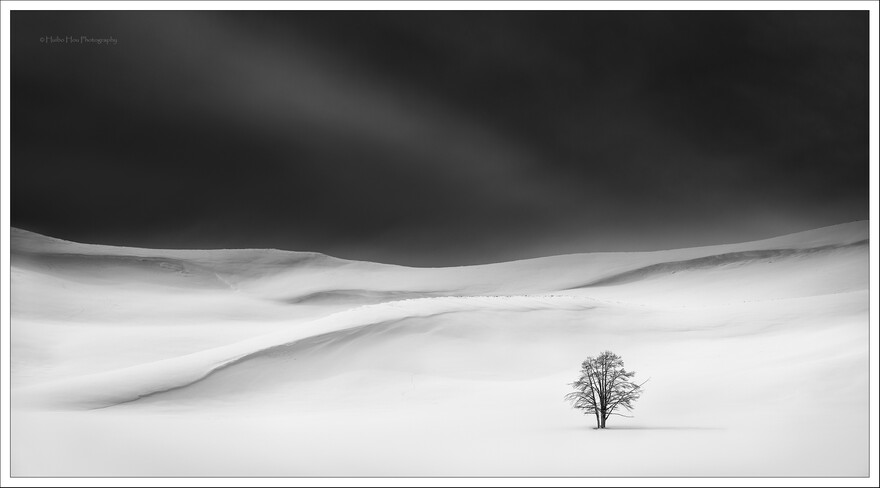In early 2017, I visited Yellowstone National Park for the first time in winter and felt an instant connection. Yellowstone, known for its bustling crowds in spring and summer, transforms into a completely different world in winter. Initially, I was not able to articulate my connection until I stumbled upon photographer Tom Murphy's book about Yellowstone winter, "Silence and Solitude". There are no better words than "silence and solitude" to encapsulate the essence and the magic of this place during the winter season. The tree in this photograph is an iconic lone tree in Hayden Valley within the park. This image holds a special place for me as a landscape photographer. It is from a trip that left a profound impact for two reasons. First, it made me realize that making a compelling image almost always starts with forming a strong connection with the landscape. Secondly, during this trip, I found myself gravitating towards the style of simplicity.
I still vividly remember the feeling when I first saw this lone tree - my heart skipped a beat. Set against the vast snow field, the scene paints a quintessential picture of winter solitude in Yellowstone National Park.
Composition is strightforward - a horizontal pano was a natural choice to accentuate the vastness of the valley, and give viewers a sense of space. The diagonal patch of thin clouds in the sky subtly mirrors the gentle sweep of the slope, adding an extra layer of visual interest.
The goal of postprocessing this image was to effectively convey my emotional response. The biggest change compared with the color original, is that I darkened sky to form a more pronounced contrast bewteen sky and foreground. Other than that, it is a simple image that does not need much postprocessing - the subject matter inherently conveys a strong sense of solitude.
This photo was taken with Canon 5D Mark IV, EF 100-400mm f/4.5-5.6L IS II USM lens, at 100mm, 1/50s, f/11. ISO 100, with tripod.


